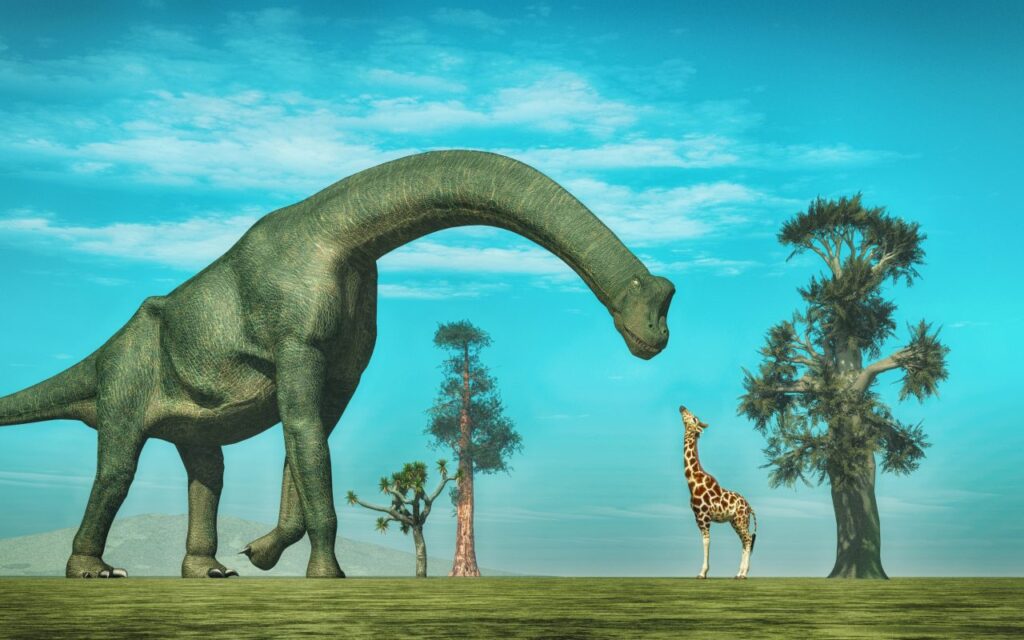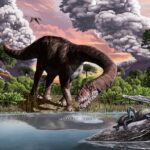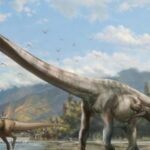Long-necked dinosaurs, also known as sauropods, are some of the most iconic creatures to ever walk the Earth. With their towering necks, enormous bodies, and massive size, they capture our imagination and often feature prominently in depictions of prehistoric life. But when did these giants roam the planet, and how long did they dominate the landscapes? In this article, we’ll explore the timeline of long-necked dinosaurs, from their first appearance to their eventual decline.
The Triassic Period: The Dawn of the Long-Necked Giants
Long-necked dinosaurs first appeared during the Triassic Period, which spanned from approximately 252 to 201 million years ago. This was a time of significant evolutionary change, as life on Earth was recovering from the mass extinction event at the end of the Permian Period, which wiped out nearly 90% of all species. In the wake of this extinction, new groups of animals began to evolve, and dinosaurs emerged as the dominant land animals.
The earliest long-necked dinosaurs were relatively small and somewhat less specialized compared to their later, giant relatives. These early sauropods, such as Plateosaurus and Massospondylus, had long necks but were not as massive as the later giants. The development of the long neck was likely an evolutionary advantage, helping these dinosaurs reach food high up in trees or in otherwise inaccessible areas. This allowed them to exploit new food sources in an environment that was still recovering and evolving.
By the end of the Triassic, the long-necked dinosaurs began to diversify, setting the stage for the more famous and massive species that would follow in the Jurassic.
The Jurassic Period: The Golden Age of Sauropods
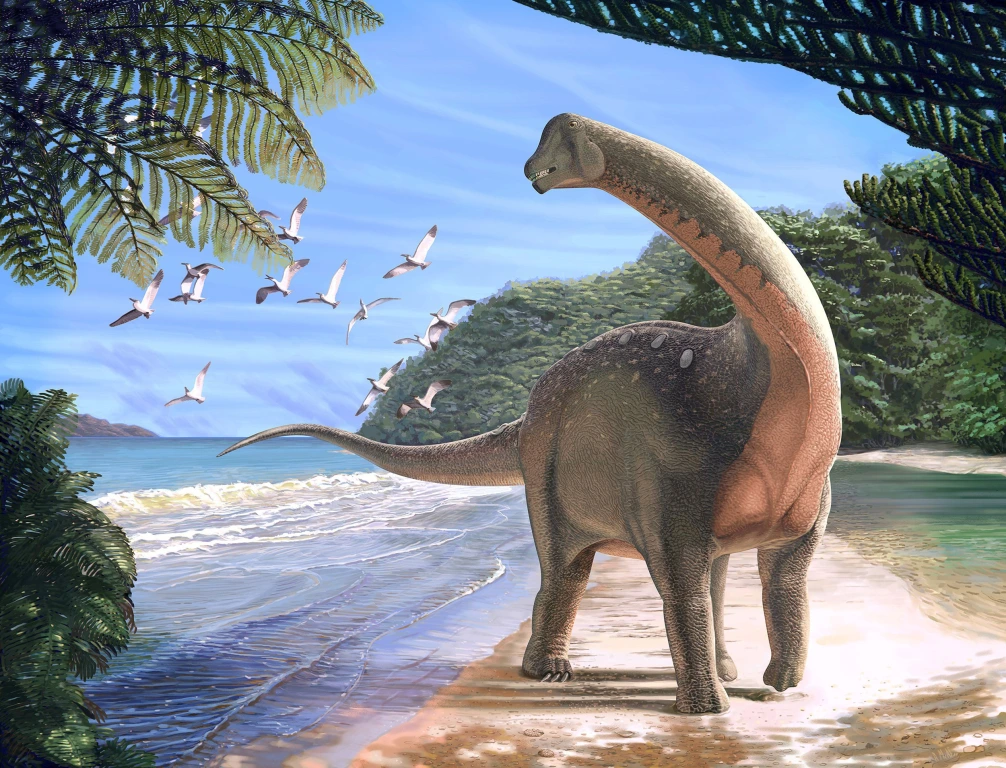
The Jurassic Period (201 to 145 million years ago) is often considered the “Golden Age” of long-necked dinosaurs. This was a time when sauropods reached their full evolutionary potential, evolving into some of the largest animals ever to roam the Earth. During this period, these herbivorous giants dominated the landscapes, feeding on vast amounts of vegetation that flourished in the warm, humid climate.
Some of the most famous long-necked dinosaurs emerged during the Jurassic, including Brachiosaurus, Apatosaurus, and Diplodocus. These dinosaurs grew to staggering sizes, with some, like Argentinosaurus, reaching lengths of over 100 feet. They had long necks that helped them access the high branches of trees, where they could feed on vegetation that was out of reach for most other herbivores. Additionally, their large size provided protection from predators, as their sheer scale made it difficult for most carnivores to pose a serious threat.
The Jurassic period also saw the first appearance of specialized sauropods, such as those with unique features like long tails or certain body proportions that allowed them to adapt to different environments and food sources. These adaptations helped the long-necked dinosaurs thrive in diverse ecosystems.
The Cretaceous Period: The Final Chapter for Long-Necked Dinosaurs
The Cretaceous Period (145 to 66 million years ago) marked the final chapter in the reign of the long-necked dinosaurs. During the early Cretaceous, sauropods were still a dominant presence in many ecosystems. Notable species from this time include Apatosaurus, Brachiosaurus, and Camarasaurus.
However, by the middle to late Cretaceous, the evolution of new predatory dinosaurs, such as the T. rex and other theropods, began to put pressure on sauropod populations. In addition, changing climates, geological shifts, and the rise of flowering plants altered the ecosystems that the long-necked dinosaurs had once dominated. Despite these challenges, some species of sauropods, like the titanosaurs, managed to survive well into the Cretaceous.
One of the most notable groups of long-necked dinosaurs in the Cretaceous was the titanosaurs, which were typically smaller than their Jurassic cousins but still large by modern standards. Titanosaurs, such as Saltasaurus and Alamosaurus, were distributed across parts of South America, North America, and Africa. These sauropods evolved unique adaptations, such as bony armor plates on their backs, which may have helped protect them from predators.
Unfortunately, the reign of the long-necked giants came to an abrupt end with the mass extinction event at the end of the Cretaceous period, around 66 million years ago. This event, which is believed to have been caused by an asteroid impact, led to the extinction of about 75% of Earth’s species, including the non-avian dinosaurs. With the dinosaurs gone, the long-necked giants were also wiped from the planet, leaving only their fossilized remains as a reminder of their once-mighty presence.
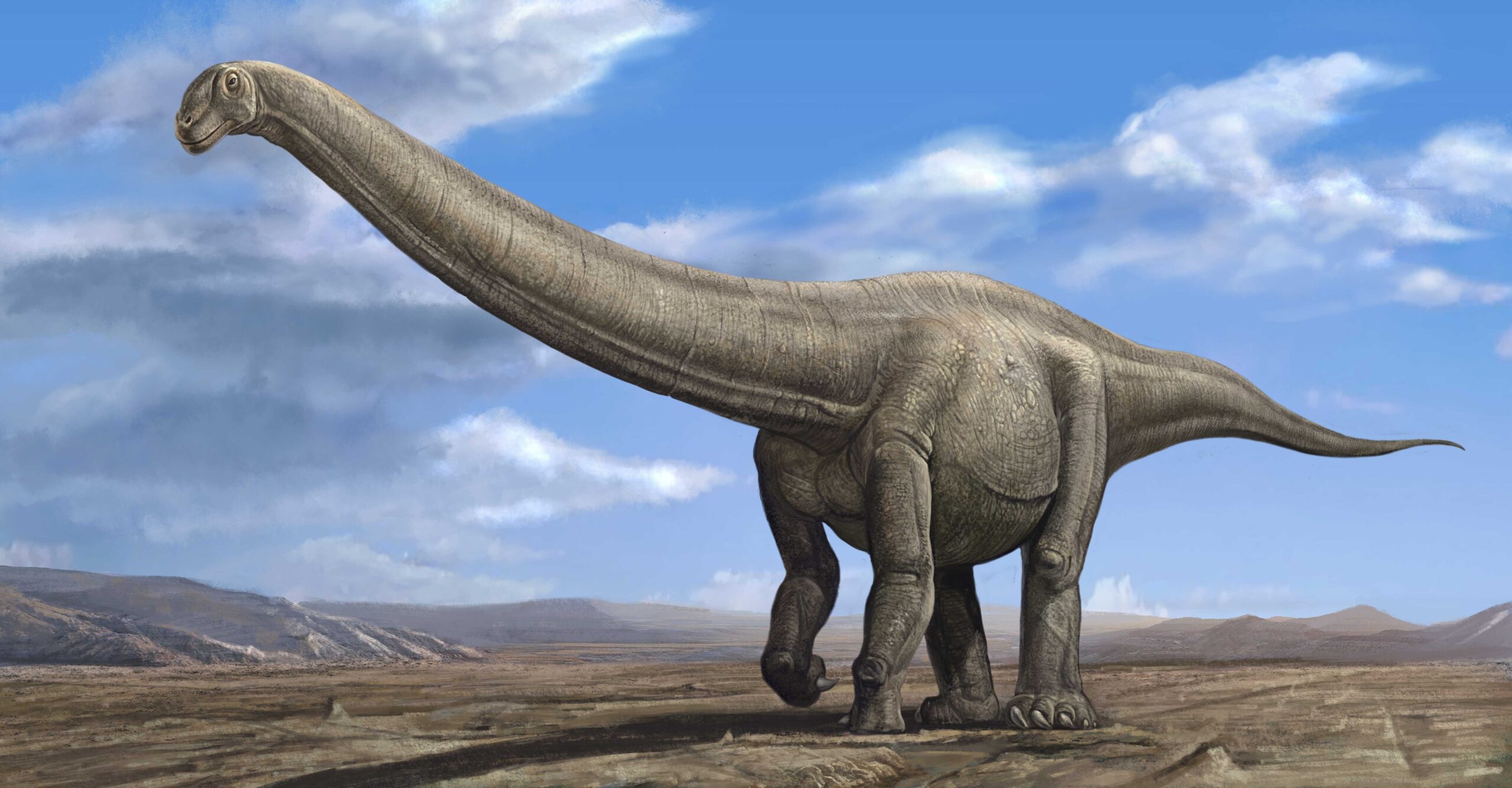
Conclusion: A Long and Storied Existence
Long-necked dinosaurs, or sauropods, first appeared in the Triassic Period, over 200 million years ago, and enjoyed their greatest period of dominance during the Jurassic Period, where they evolved into some of the largest land animals to ever exist. By the Cretaceous Period, their numbers began to dwindle due to ecological shifts and the rise of new predators, but they persisted until the mass extinction event 66 million years ago brought an end to their reign.
The legacy of these incredible creatures continues to captivate us today. Through fossils and ongoing research, we continue to learn more about their lives and the ecosystems they once inhabited. Though long-necked dinosaurs no longer roam the Earth, their fossils remain a testament to the ancient and extraordinary world in which they lived.

